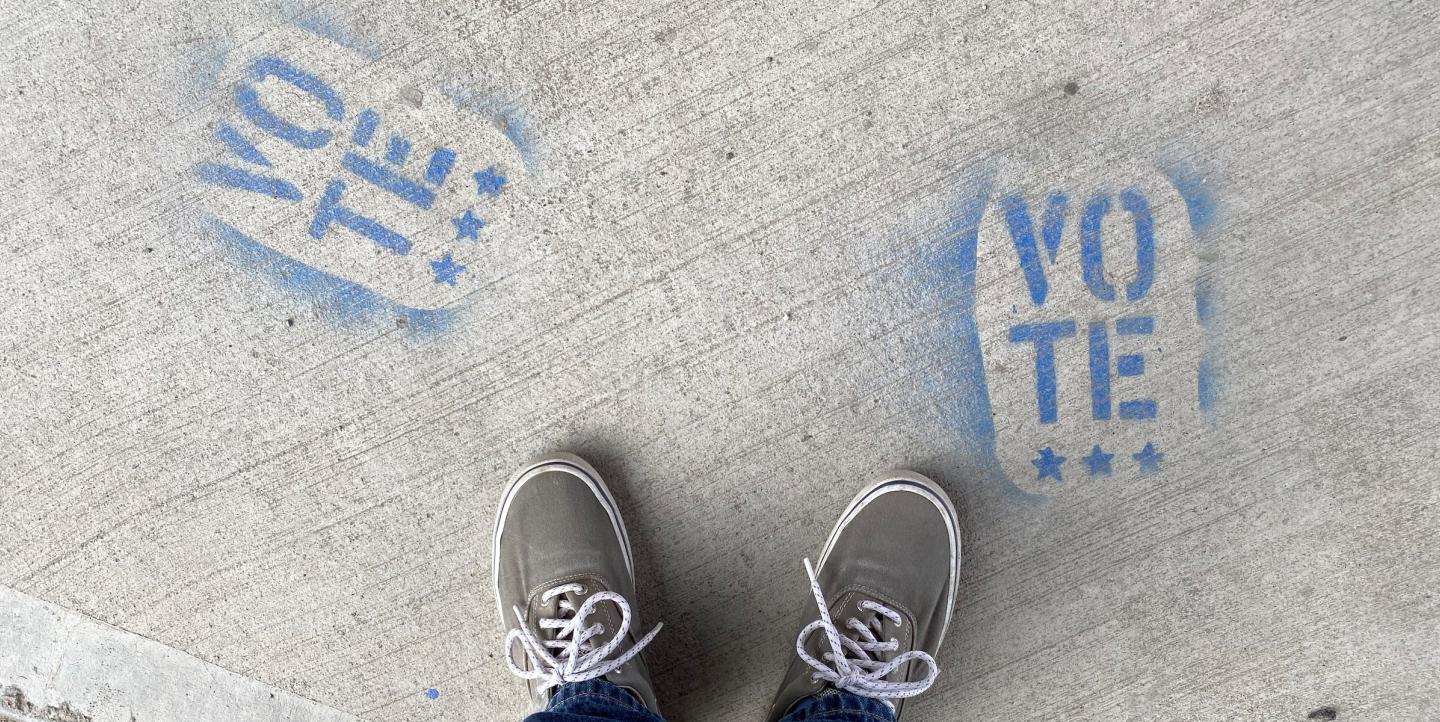The COVID-19 pandemic has made it clear that mis- and disinformation travel between countries. In some cases, that false information is adapted to help it gain traction with different audiences. In general, however, successful disinformation narratives are often repeated. Those who create disinformation are efficient: when a strategy works, they reuse it.
With this in mind, the LatamChequea coalition — a network of Latin American, Spanish, Portuguese and U.S. fact-checkers fighting Spanish-language disinformation — set out to determine if elections-related disinformation has any common patterns. We discovered that at least 10 types of disinformation repeated in electoral cycles over the last three years in every country we researched in Latin America, as well as in the 2020 U.S. elections.
We have been prepared for these same disinformation strategies and themes in the lead-up to the 2022 U.S. midterm elections on November 8.
Here’s a breakdown of 10 types of electoral disinformation you are likely to come across on social media, or on the websites of disinformation-peddling outfits masquerading as legitimate media outlets.
(1) Some irregularities in the electoral process don’t mean that there is fraud
In an electoral process involving millions of people, it is not uncommon for certain errors or irregularities to occur. The nature of these inconsistencies depends on a country’s electoral system; in many cases, it involves an erroneous provisional vote count at a polling station. Inconsistencies like these can give rise to disinformation narratives, as has been the case in South American countries, such as Argentina, Peru and Colombia. Oftentimes, these errors are misrepresented as evidence of alleged organized fraud.
Typically, unintentional irregularities in the voting process don’t systematically favor any particular party. Intentional irregularities, on the other hand, seek to bias the results in favor of a certain group. There are ways to analyze the transparency of an election and determine whether any inconsistencies are unintentional errors or intentional manipulations. An error during an election is not automatic proof of fraud.
(2) Denouncing alleged fraud coordinated by authorities
In tandem with allegations of irregularities during the electoral process, candidates and their supporters might accuse political and/or election authorities of coordinating efforts to defraud an election. This tactic is used in an attempt to demonstrate organized fraud arranged by national, local and/or election authorities.
Brazil is a notable example. During the 2018 elections, then-presidential candidate Jair Bolsonaro used false information as part of his campaign to allege electoral fraud. That ballot boxes were being tampered with was the most widely disseminated disinformation narrative during Brazil’s election cycle that year. Bolsonaro would go on to win the election.
The so-called "Big Lie” in the U.S., promoted by former President Donald Trump, is similar. This disinformation alleges that the 2020 U.S. election was “stolen,” leading to a fraudulent victory by current President Joe Biden. This has been widely debunked. No court has determined that there was widespread electoral fraud. In fact, Trump lost 63 of the 64 lawsuits he filed on the matter. The only case he won did not prove any fraud.
Other allegations made during the 2020 U.S. election made use of videos and still images showing election personnel writing or taking notes. This content was then used to accuse personnel of modifying ballots in Pennsylvania. This claim was shown to be false; the activities captured in the videos and photos were part of routine election day work.
Trump’s efforts to undermine the legitimacy of the 2020 presidential election began long before election day. His refusal to concede and acknowledge defeat later led him to incite his supporters to storm the U.S. Capitol Building in Washington, D.C. on January 6, 2021. Here is a collection of at least seven attempts made by Trump, his followers, and his campaign to invalidate the election.
(3) Alleging that votes were cast in the name of deceased persons
Another disinformation theme that circulates in many elections in the Americas is that deceased persons are included on the voter rolls. Voter registration databases are never updated on the day of the election; between the day they close and election day, there are people who may pass away.
Another line of disinformation related to this topic is that people use the ID cards of deceased people to vote. Voting authorities typically correct these registration errors.
In Peru’s 2021 elections, a video circulated showing an electoral certificate supposedly signed by a deceased person. This turned out to be a typing error: the user entered the last digit of their identity card incorrectly, putting a 9 instead of a 4.
Following the 2020 election in the U.S., then-President Donald Trump denounced that votes had been cast in the name of deceased people in Georgia. In a call leaked to the press with Georgia Secretary of State Brad Raffensperger, Trump insisted that there were "close to 5,000 dead people's votes" in that jurisdiction. Upon investigating, Raffensperger, notably also a Republican, said that two illegal votes cast on behalf of dead people had been confirmed — not thousands, as Trump alleged.
“The actual number were two. Two. Two people that were dead that voted. And so that’s wrong,” Raffensperger told the AP.
(4) Circulating disinformation that people are voting who are not qualified to do so
A significant amount of content designed to attack marginalized communities circulates during election cycles. One example is disinformation asserting that immigrants who are ineligible to vote will do so.
This type of false content varies according to each country’s voting regulations. For example, several pieces of disinformation circulated in Colombia claiming that Venezuelans could vote in the country’s 2019 elections. According to the country's voting rules, however, immigrants can vote only if they have a foreigner's ID card, have been in the country for five years or more, and are registered to vote. In other words, it is true that Venezuelans can vote in Colombian elections (like any foreigner there), but only if they meet these criteria.
In the U.S. 2018 midterm elections, then-President Donald Trump issued warnings about potential voters without documentation, singling out newly arrived immigrants to the U.S. who "might try” to vote illegally. He also cast doubts about the security of early voting by mail.
As we explain in this Factchequeado article, only U.S. citizens at least 18 years of age are eligible to vote in the country’s elections. The naturalization process to qualify for citizenship takes years.
(5) Manipulation designed to discourage people from voting or get votes invalidated
Every country has different rules as to when a vote should be annulled or challenged (i.e., not counted as valid). Many disinformation narratives seek to deceive citizens and lead them not to cast their votes, or to do so incorrectly.
In Mexico, content circulated assuring people that it was possible to vote for more than one candidate. Those who followed this advice had their votes invalidated. Another example is a video that circulated in Colombia, which said that if people had already voted for a candidate in the first round it was not necessary to do so in the second round because the vote was already registered.
In the U.S., Trump again called the integrity of the mail-in ballot into question in 2020. At a rally in North Carolina, he urged people to vote twice: first by mail and then in person, to test and supposedly corroborate allegations that mail-in ballots were not a secure way to vote. Trump insisted that voting by mail is susceptible to fraud, although the U.S. courts have rejected that argument for lack of evidence.
(6) Disinformation about the documentation needed to vote
Disinformation narratives related to this theme spread false information about the types of documents required by electoral agencies in order to vote. During the pandemic, this disinformation took new forms, as many countries allowed voting with expired ID cards or documents due to how difficult it was to renew documentation.
In Chile, when voting for a new Constitution in 2020, false narratives circulated stating that it was not possible to vote with an expired ID when in fact it was.
(7) Disinformation about citizens voting abroad
Another type of false content that tends to circulate during elections relates to voting for citizens living abroad. One recent piece of disinformation claimed that the Chilean embassy in Canada prohibited Chilean citizens from voting.
In Mexico, images of a stack of ballots sent to Mexicans living abroad went viral, accompanied by an accusation that there were certain races missing from the ballots, specifically the ones for federal deputies. However, Mexican legislation does not allow Mexicans living abroad to vote for all public offices. What races voters are eligible to vote in while abroad depends on the type of election, and the state in Mexico in which they reside.
(8) Chaos on election day
This type of false content seeks to disorient citizens or generate fear about the timing of an election. For example, falsehoods may spread about what days or times people can vote. In the most recent Chilean elections, the situation was especially confusing because, while the elections of October 2020 were held on a single day, those of May 2021 were held on two separate days.
Other false content that appeared in Chile assured people that voting centers would not be monitored, or that they would be insecure. Similarly, in Mexico, disinformation circulated assuring voters that entering a polling location with a cell phone was prohibited.
(9) False polls
Most countries prohibit or specifically regulate the publication of election polls in the hours leading up to and during Election Day. However, it is common for false content imitating the format of real polls to circulate on election days. This disinformation might falsely announce results or trends that benefit one party or parties.
In Mexico's 2021 elections, on the day of the election itself, a supposed exit poll circulated with the results of the gubernatorial election for the town of Sinaloa, with the logo of an official pollster. It was a false poll: in Mexico, it is forbidden to disseminate polls while people are still voting, and the official pollster denied publishing the study.
(10) Fabricated candidate statements
Disinformation during an election cycle might put forth false content about candidates running for office. Malicious actors might disseminate photos that have been manipulated with editing programs, or take quotes or clips of information out of context.
These same tactics have been used to create false election advertisements. In Ecuador, doctored images were spread showing a presidential candidate being vaccinated at a time when only health personnel were eligible.
False statements are often manipulated through news banners that display a phrase, or image cards that use the logo of a media outlet with the photo of a candidate and a falsely attributed quote. These types of resources are widely used to spread disinformation because they are cheap, appear credible, and are easy to edit. The same issue arises with creating fake tweets, which are similarly easy to edit and manipulate.
Being aware of the different types of electoral disinformation that are repeated across elections in different countries can help you identify false information designed to deceive, and help you avoid sharing it.
If you’d like to learn more about this topic, the ElectoralCheck website, from UNESCO, offers materials specially designed for teachers, journalists, election authorities and voters, with a focus on first-time voters.
Main image by Phil Scroggs on Unsplash
This article was originally published by IJNet in Spanish. It was translated to English by journalist Natalie Van Hoozer.


